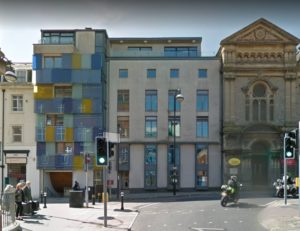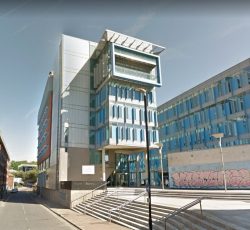


DESIGN QUALITY MATTERS: IT CAN HELP IMPROVE THE LOCAL ECONOMY AND RE-INVIGORATE RUN-DOWN AREAS
Higher quality buildings lead to a place where people want to be and commerce want to be associated with, as SAGA’s move to the new development in the Priory Quarter illustrates. Good modern buildings create a business environment that is progressive and forward looking.
A planning department that better understands business and the design process will enable the complexities of town planning to be a collaborative rather than a confrontational process. Planning decisions based on a transparent and timely process give businesses the confidence to invest.
Once we move from the ingrained “poor quality development welcome” attitude to one of permitting only high quality development the town will move towards being one that attracts high quality investors.
Buildings of higher design quality, and associated improvements to landscape and urban space, not only improve the quality of life but help provide an incentive for investment.
WHY GO OVERSEAS FOR DESIGN ADVICE?
On at least two occasions consultant’s based in Europe have been employed to put forward regeneration proposals for Hastings.
Whilst recognizing the value of seeking the best advice available, it is questionable why the default first-base action of HBC seems to be to parachute in out-of-town consultants to propose a solution to an often ill-defined brief. Would it not be better to first engage with the local community, and local design expertise, to define what the issues might be so that a broadly acceptable, cross-sector, brief could be agreed before moving forward?
WHY SELL OUT TO DEVELOPERS?
The standard approach by HBC in trying to meet their housing targets on land in their ownership is to negotiate a development scheme with an established mass-housing developer. Almost inevitably this is profit-driven and tends to result in poor quality developments based on repeating “market-tested” solutions used elsewhere.
The refreshingly different approach proposed by Heart of Hastings for a community development at Ore was regrettably frustrated, not by any direct action of HBC, but by SeaChange discarding community benefit in favour of following similar profit driven motives to the private sector.
If the profit motive could be taken out of the equation, or at least removed from its prime driving position, then HBC might be able to return to providing social housing at a fair rent with secure tenure, to the benefit of our community. Such an approach could enshrine high design standards and levels of sustainability not offered by low-end speculative housing.
Norwich City Council have recently adopted a radical new approach resulting in a 100% true social housing provision on their own land, rather than the minimal “affordable housing” included in developers’ schemes at planning stage, often to be withdrawn later on viability grounds (see Guardian article).
If it can be done elsewhere, why can it not be done here? At the very least shouldn’t HBC investigate the Norwich template?
DESIGN AWARENESS
Should Planning Committee members, and indeed Planning Officers, undertake some design awareness training? More to follow.
SUSTAINABILTY
There is an urgent need to promote sustainable design in Hastings – both new-build and retro-fit. More to follow.